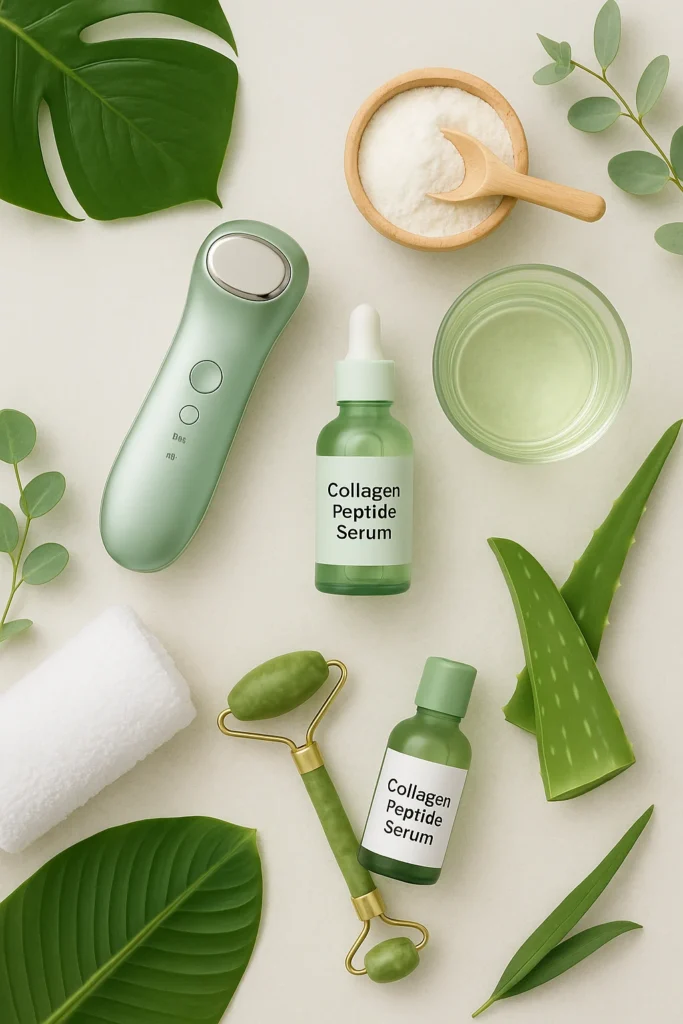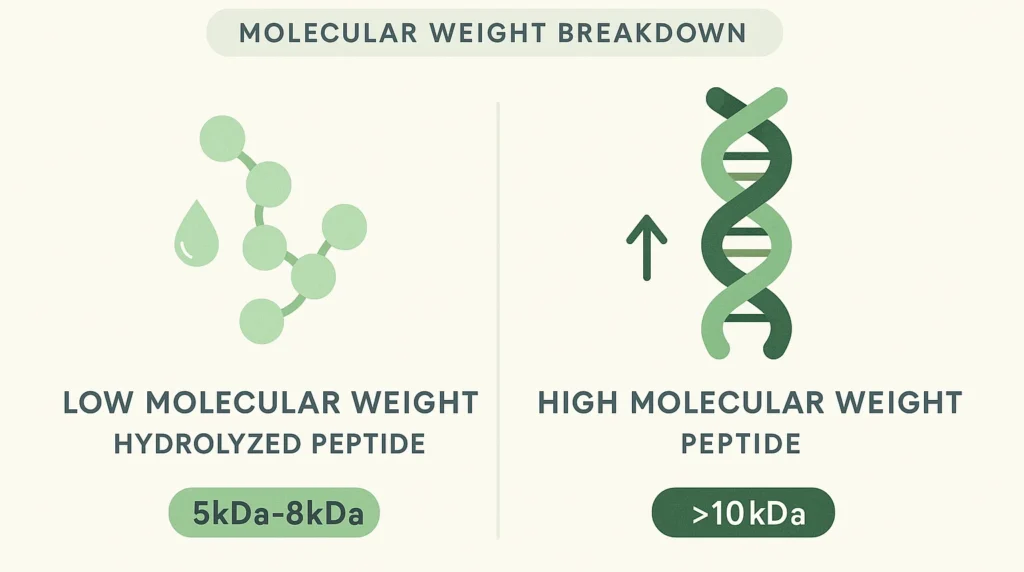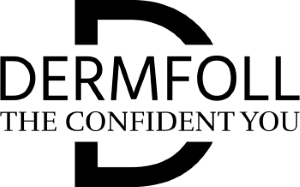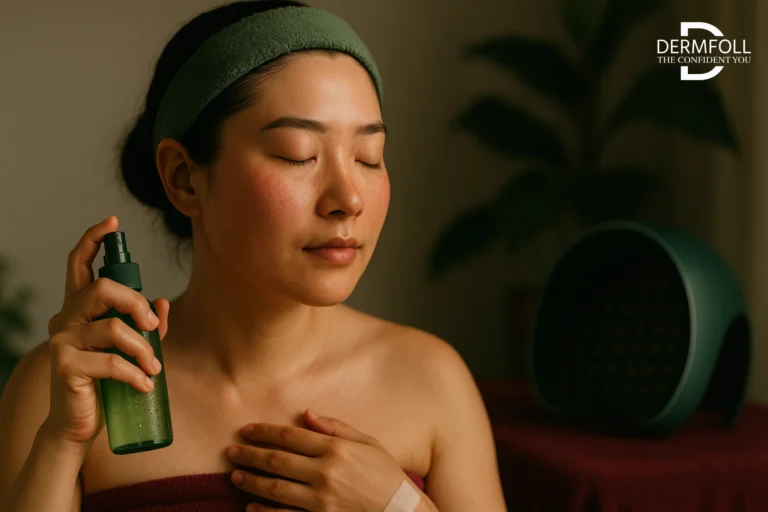If you’ve ever invested in a good radio frequency facial device, started taking a collagen hydrolysate supplement for skin, or both — only to feel like the results were… underwhelming — you’re not alone.
I’ve had many readers ask me, “I’m doing everything right — why isn’t my skin changing the way I expected?”
Here’s something most brands won’t tell you, but it matters — peptide size.
I’ve seen how crucial it is to understand not just what ingredients you’re using, but how they function — especially when paired with devices like an rf facial machine.
And in the case of collagen peptides, one of the biggest game-changers is whether you’re using low or high molecular weight formulations.
This post is all about cutting through that confusion.
We’ll talk about:
- What exactly makes low molecular weight peptides more effective for skin tightening.
- Why high molecular weight peptides still have a role — but it’s very different.
- How these different forms interact with your radio frequency facial device.
- And how you can time or pair your collagen hydrolysate supplement for skin for the best results.
If you’re using peptides with no clear improvement — or planning to start — understanding this one piece might be what finally makes everything click.
Let’s break it down together.
Low Molecular Weight: Collagen Hydrolysate Supplement For Skin
One of the most crucial but sometimes disregarded factors when discussing collagen in skincare is molecular weight. Especially, how low molecular weight collagen peptides behave compared to their bigger counterparts.
Low molecular weight peptides are those that fall less than 10,000 Daltons. Hydrolysis, the process by which full-length collagen proteins are broken down into shorter chains, generates these tiny bits.
The outcome is… Whether taken as a collagen hydrolysate supplement for skin or administered topically. This form has a better rate of absorption.
Because of their small size, these peptides can penetrate the epidermal barrier more efficiently, reaching the deeper layers.
Once within, they assist fibroblasts—the cells in charge of producing collagen—to be active. This procedure promotes skin regeneration from within — increasing firmness, elasticity, and overall texture over time.
This impact gets considerably more intense when paired with a radio frequency facial device. By use of controlled heat, RF treatments activate the dermis, enhancing circulation and relaxing the tight connections between skin cells. This makes it easier for peptides to reach their target, boosting both delivery and efficacy.
In short, low molecular weight collagen peptides provide tremendous potential for skin tightening and deep repair. Especially when partnered with supportive technologies like RF.
Oral or Topical – Do They Both Work?
If you’re drinking your peptides in a supplement, those little molecules are absorbed into your bloodstream and distributed to your skin from the inside.
If you’re applying them on the outside — especially after utilizing an rf facial device. The same peptides can reach the dermis directly.

High Molecular Weight Collagen Peptides: Surface Hydration vs. Structural Support in RF Treatments
What Are High Molecular Weight Peptides?
While low molecular weight peptides are known for their ability to penetrate deeper and boost collagen formation from within. High molecular weight collagen peptides serve a distinct — but nonetheless valuable — purpose in skincare.
These peptides are larger than 10,000 Daltons, which means they’re too massive to pass past the skin’s protective barrier. Instead of reaching the dermis, they remain on the skin’s surface.
How Do They Work on the Skin?
Think of high molecular weight peptides as a lightweight shield. Once applied, they form a thin, permeable layer that helps lock in moisture. Preventing excess transepidermal water loss (TEWL).
This helps the skin feel smoother and more supple – ideal for easing dryness or briefly plumping up the skin’s surface.
Their Role while using rf facial machine
When it comes to using these peptides with an rf facial machine, their role is slightly different from low-weight peptides.
Since they don’t penetrate deeply, they don’t directly affect collagen formation at the cellular level. However, they do maintain barrier function, which can be useful post-treatment — especially when skin can be more sensitive following RF exposure.
What’s the Best Way to Use High Molecular Weight Peptides?
Because of their bigger size, high molecular weight collagen peptides are best given topically.
They’re not designed for deep penetration but instead produce a protective, moisturizing layer on the skin’s surface.
Oral supplementation is not necessary for this form — their true effect comes from building a moisture-sealing barrier when applied promptly after washing or RF face treatments.
Why Combine Both Peptide Types?
In RF skincare programs, it’s typical to see formulas that include both low and high molecular weight collagen peptides.
The smaller peptides work beneath the surface to activate fibroblasts, while the larger ones stay on top to moisturize and protect. It’s a balanced strategy — one that supports both deep mending and immediate surface benefits.
If you’re utilizing a collagen hydrolysate supplement for skin internally and applying topical peptides externally with your rf face gadget, you’re already covering both fronts — which is exactly what your skin needs.

How Collagen Peptides Power Skin Lifting and Recovery in RF Facial Treatments
Radio frequency (RF) technology works by delivering controlled heat into the dermis — the deeper layer of your skin — while keeping the surface intact.
This thermal energy boosts microcirculation, encourages oxygen flow and this activates fibroblasts
The heat reaction also stimulates a minor wound-healing process. This leads to collagen remodeling and gradual skin tightening.
Whether conducted in-clinic or with a well-designed radio frequency facial device at home, the technique remains the same: stimulate the dermis to revive from inside.

The Role of Peptides in Fibroblast Activation and Collagen Regeneration
Collagen peptides, especially those formed from hydrolyzed collagen, are recognized by your skin’s fibroblasts as repair signals.
This leads to increased expression of collagen-related genes and subsequently induces the fibroblasts to ramp up creation of new collagen.
These effects have been reported both with topical treatment (when peptides are tiny enough) and oral supplementation utilizing a collagen hydrolysate supplement for skin.
Why Combining Peptides with RF Enhances Results
When used in tandem, collagen peptides and radio frequency facial device provide a synergistic impact.
The peptides activate fibroblasts, while the RF produces an environment that facilitates greater penetration and cellular activation.
Heat from the RF opens intercellular channels and improves circulation. Facilitating the transfer of low molecular weight peptides to deeper skin layers.
Meanwhile, fibroblasts already primed by peptide signaling respond more efficiently to the RF stimulation.
This dual action supports visible changes in elasticity, firmness, and overall skin texture.
Optimizing Your Routine: When and How to Use Collagen Peptides with RF Facial Machine
To get the optimum outcomes from this combo, time and consistency matter:
Take your collagen hydrolysate supplement for skin daily, ideally for 8 to 12 weeks for better systemic delivery and build-up in connective tissues.
Some well known hydrolyzed supplement like Vital Proteins Collagen Peptides or FromBIO Collagen 300 Light, can support deep tissue regeneration over time.
For Tropical Use
Choose a product with low molecular weight peptides (around 10kDa) for improved penetration.
Apply topical collagen peptides immediately after your RF session – this is when your skin is most receptive.
And Consider formulations that have a good ratio of bigger peptides for surface hydration.
So, for Post-treatment, apply topical formulations like G.M. Collin Marine Collagen Cream or The INKEY List Collagen Peptide Serum.
This dual strategy delivers surface hydration and deeper structural repair—magnifying visible lifting, firmness.
CONCLUSION
So now we’ve unpacked one of the most overlooked (but honestly, crucial) parts of your skincare routine: peptide size.
Just to quickly recap:
- Low molecular weight peptides go deep — they help activate fibroblasts and stimulate real collagen production, especially when used with an rf facial machine.
- High molecular weight peptides stay on the surface, locking in moisture and supporting your skin barrier — perfect after a treatment session or in harsh environments.
- And combining both, when done right, creates a layered approach that hydrates, repairs, and firms.
But here’s the thing… peptide size is just one part of the equation.
Up next, we’re diving into something even more fundamental: transepidermal water loss (TEWL) — what it is, why it matters way more than most people think.
And how your RF treatments might be helping (or hurting) your barrier function without you realizing it.
If you’ve ever felt dry or tight after using your rf facial machine, or wondered whether heat is messing with your skin’s ability to retain moisture — this next post will clear that up.
Stay tuned — and as always, if you’ve noticed any changes (good or not-so-good) while using peptides with your RF device, feel free to share below. We’re all learning how to do this better, together.
— Dr. Idriss








